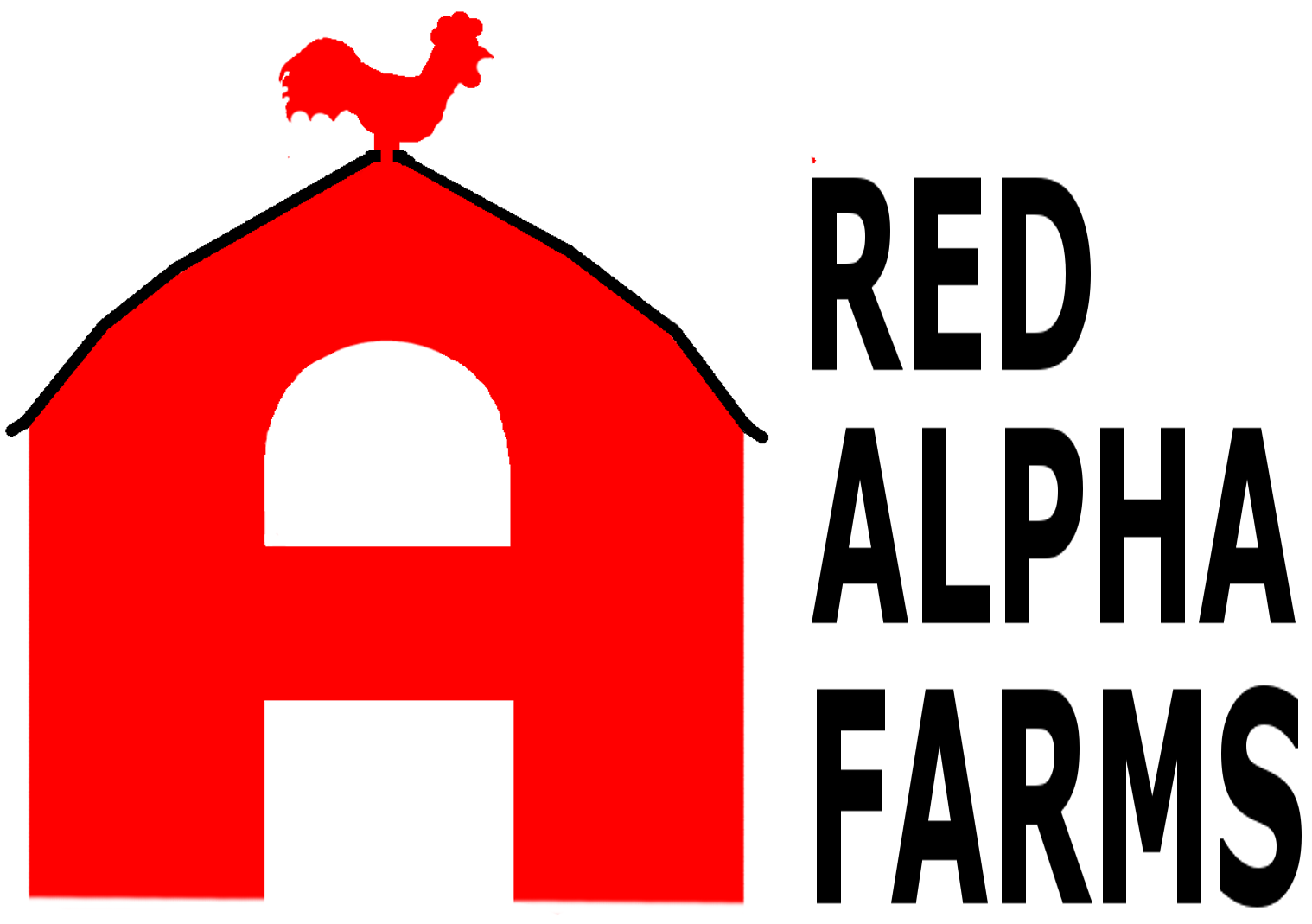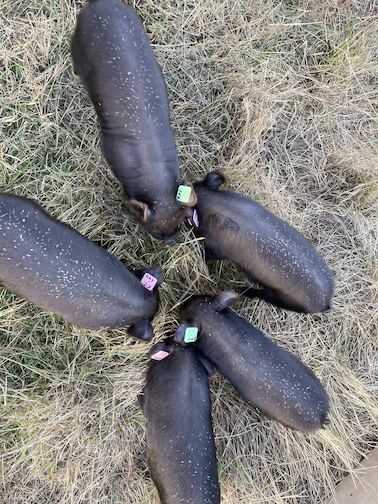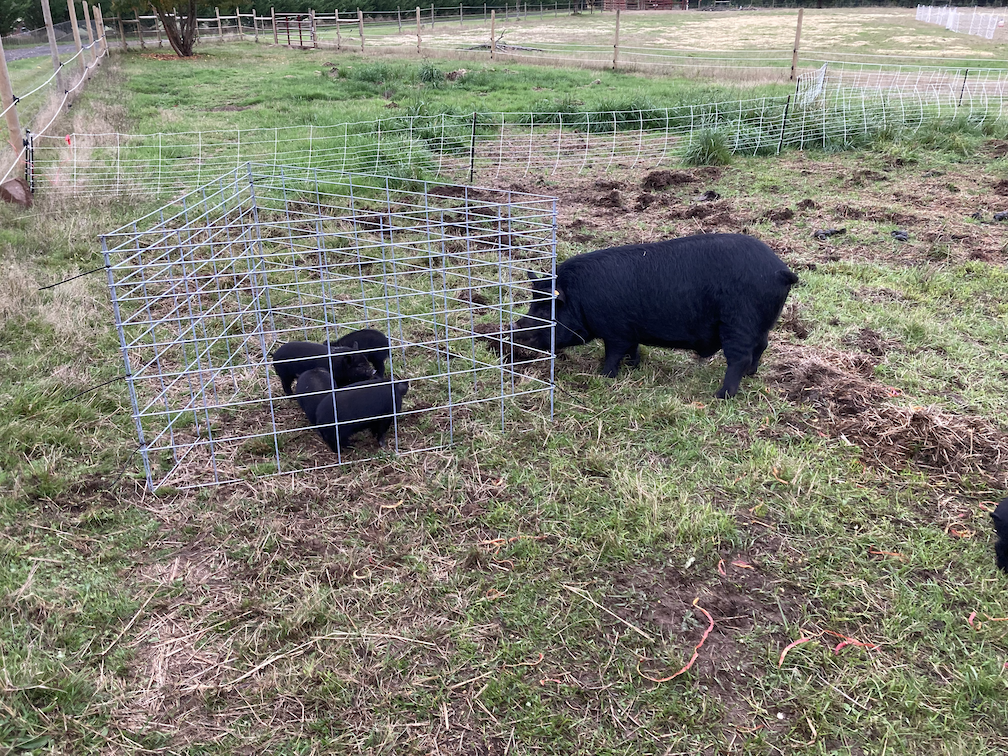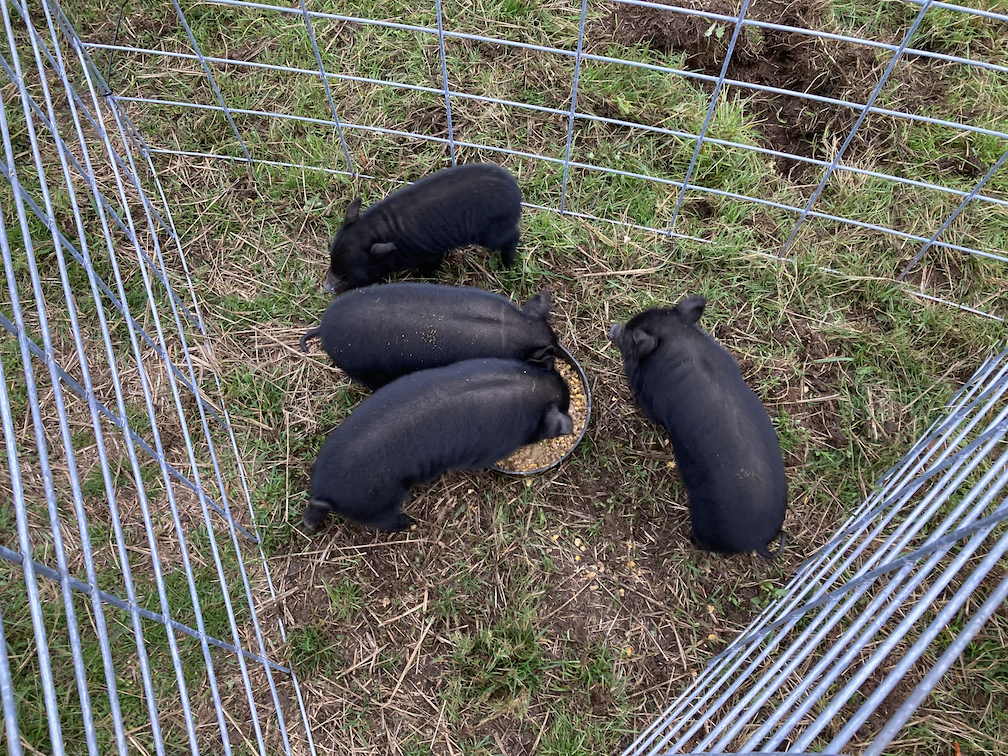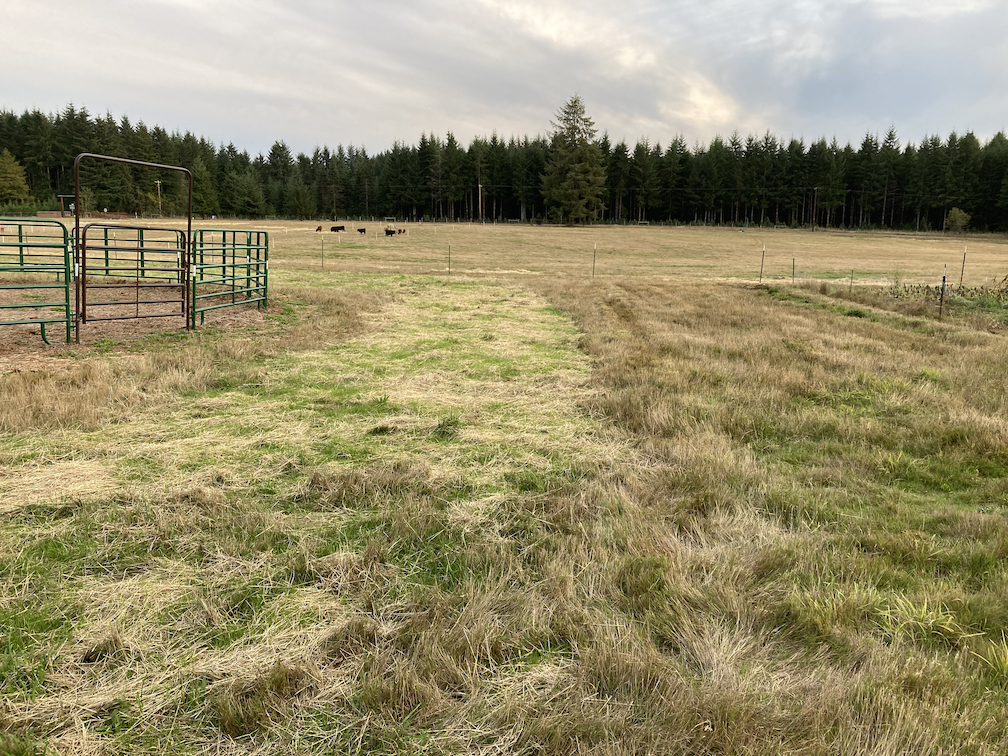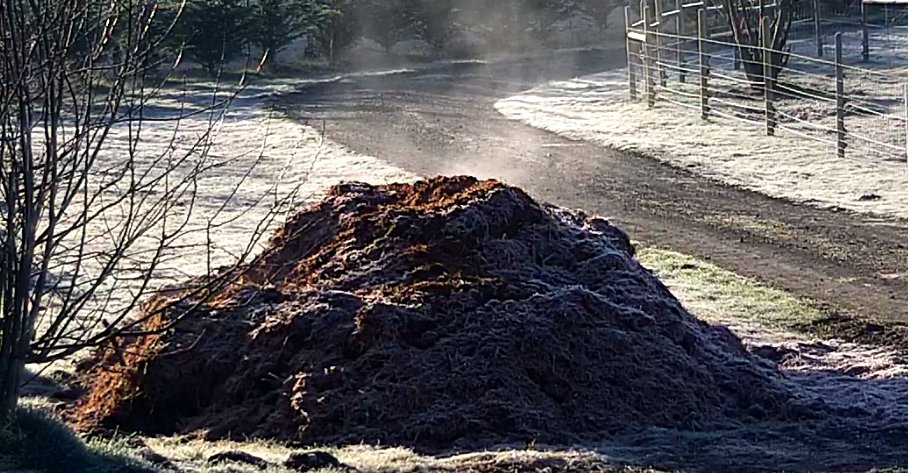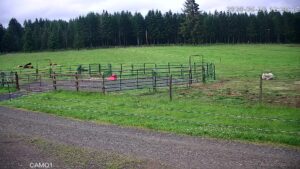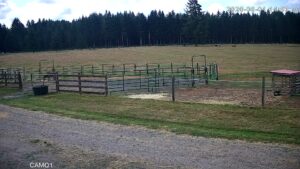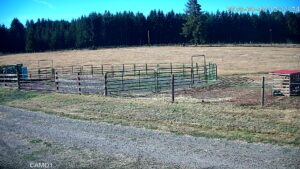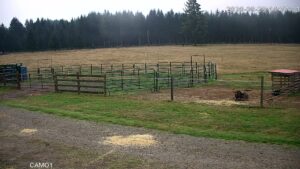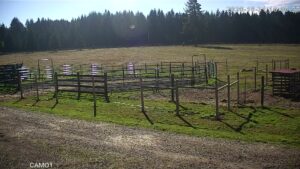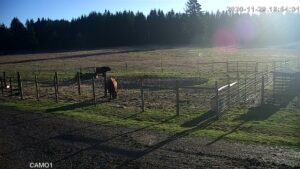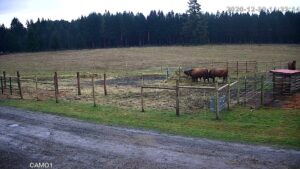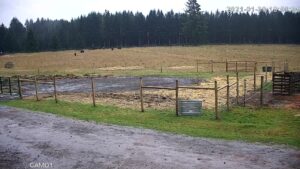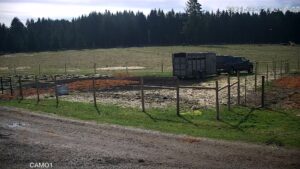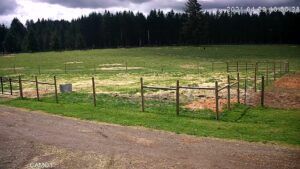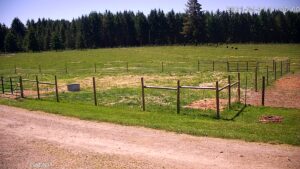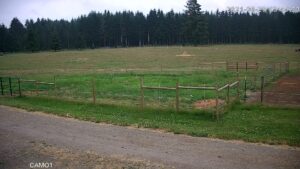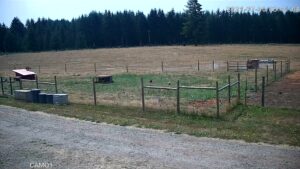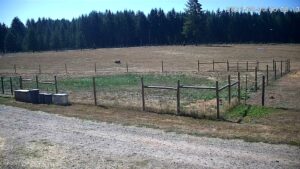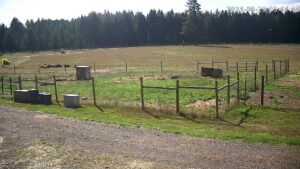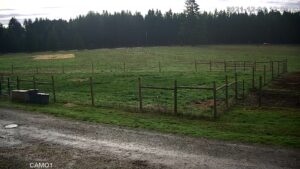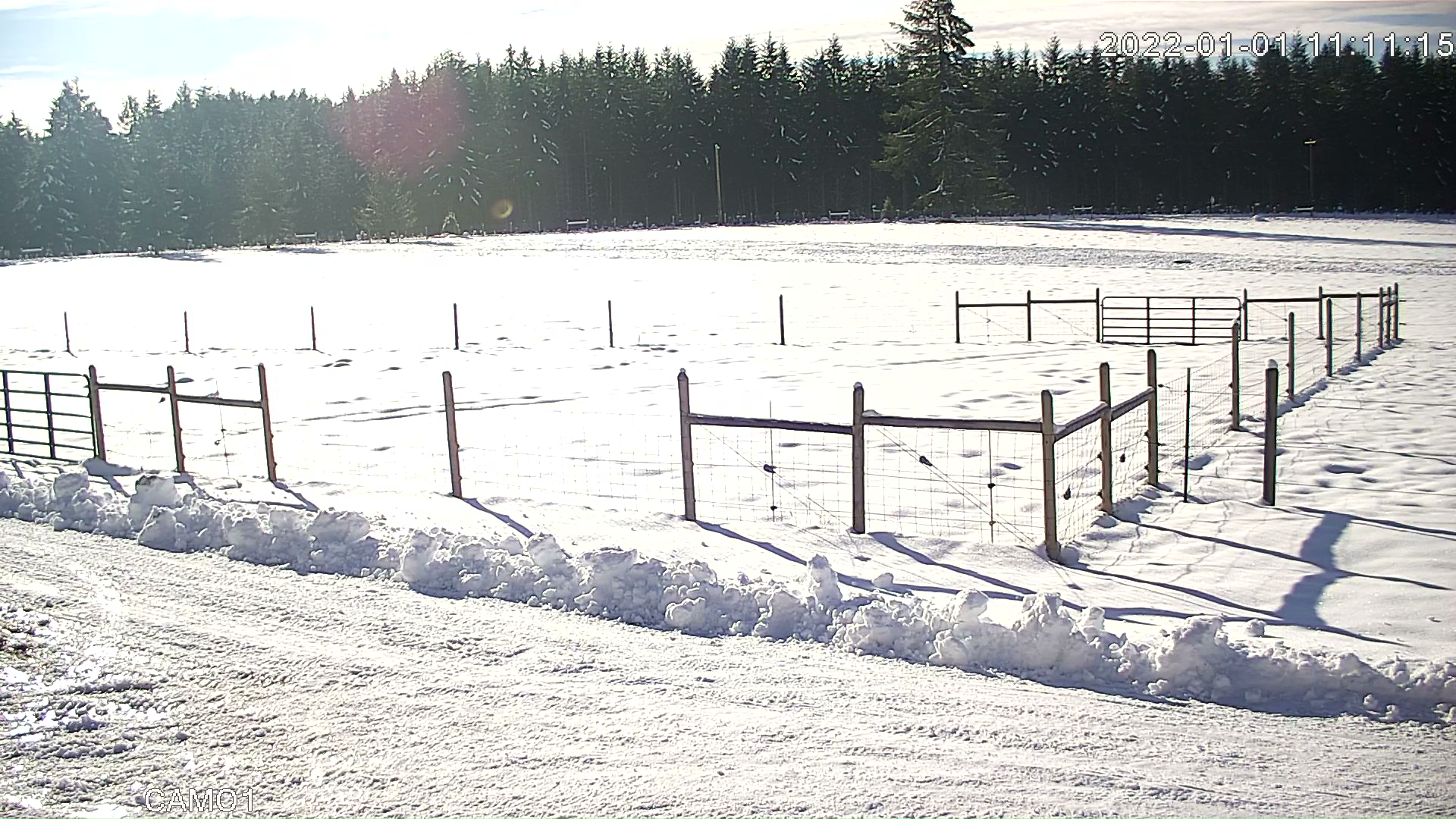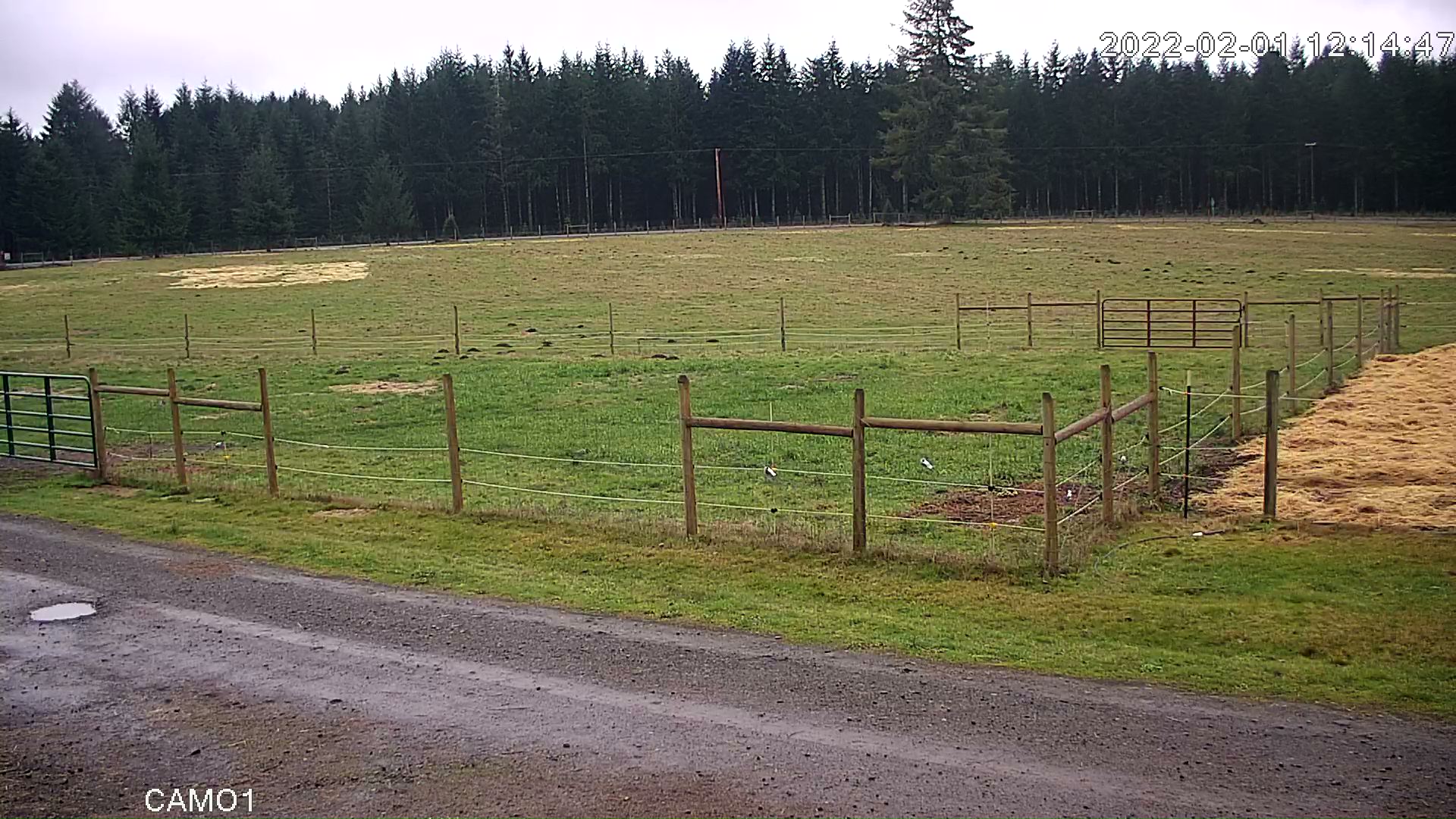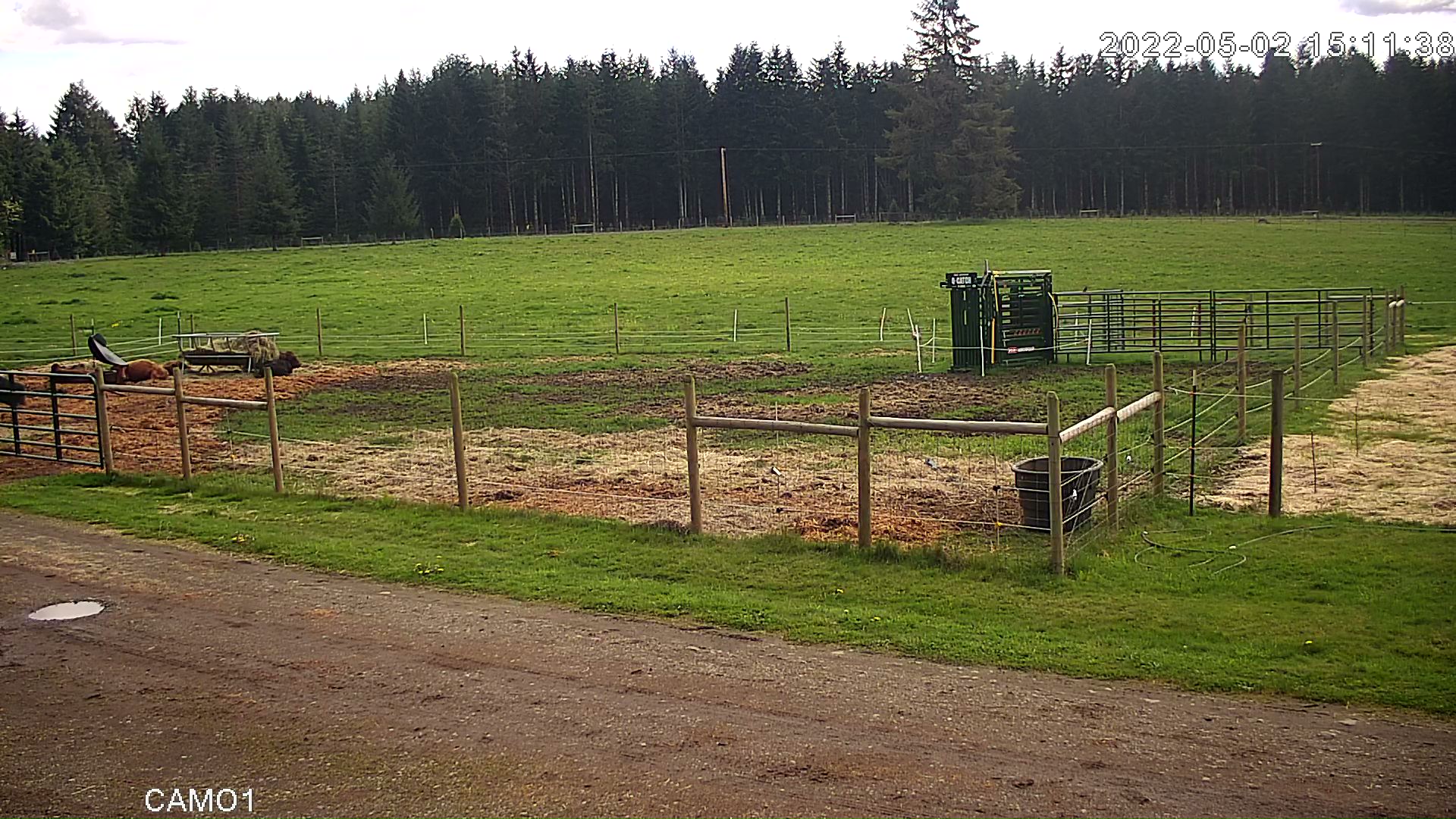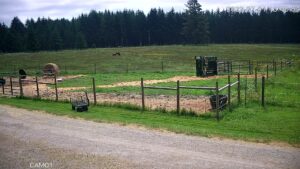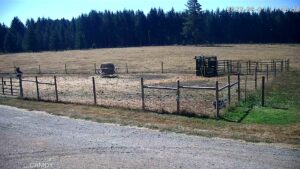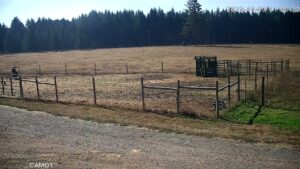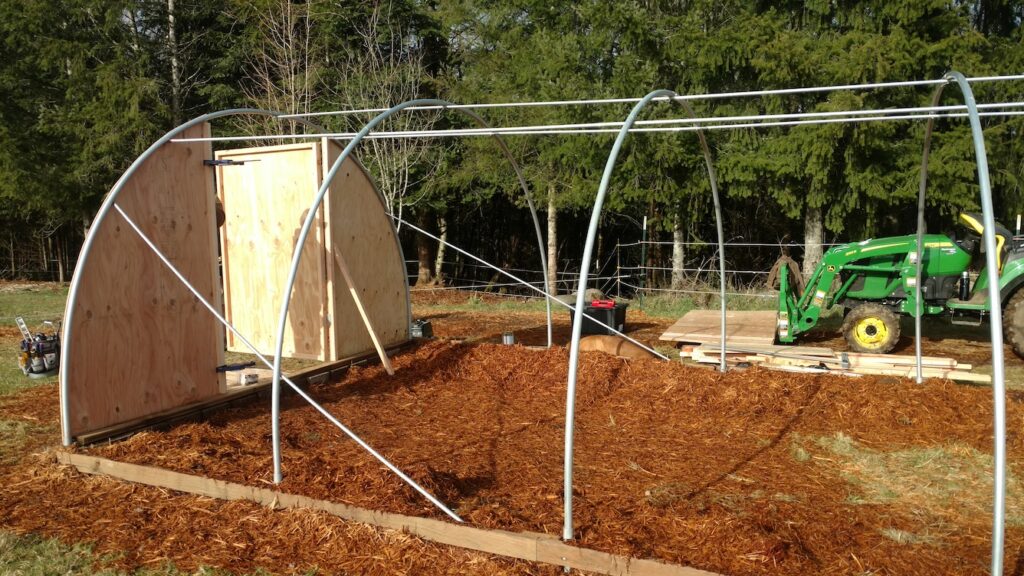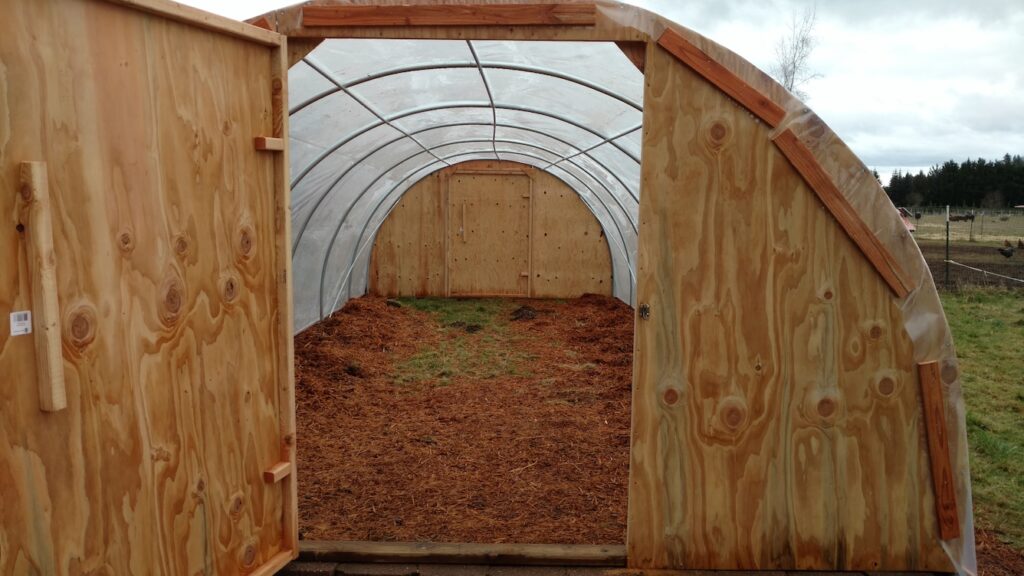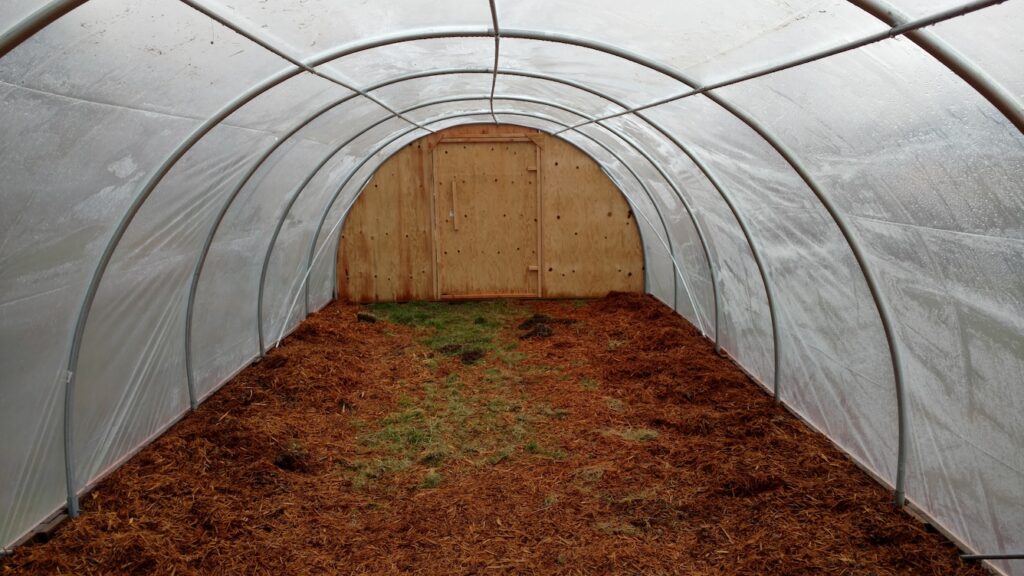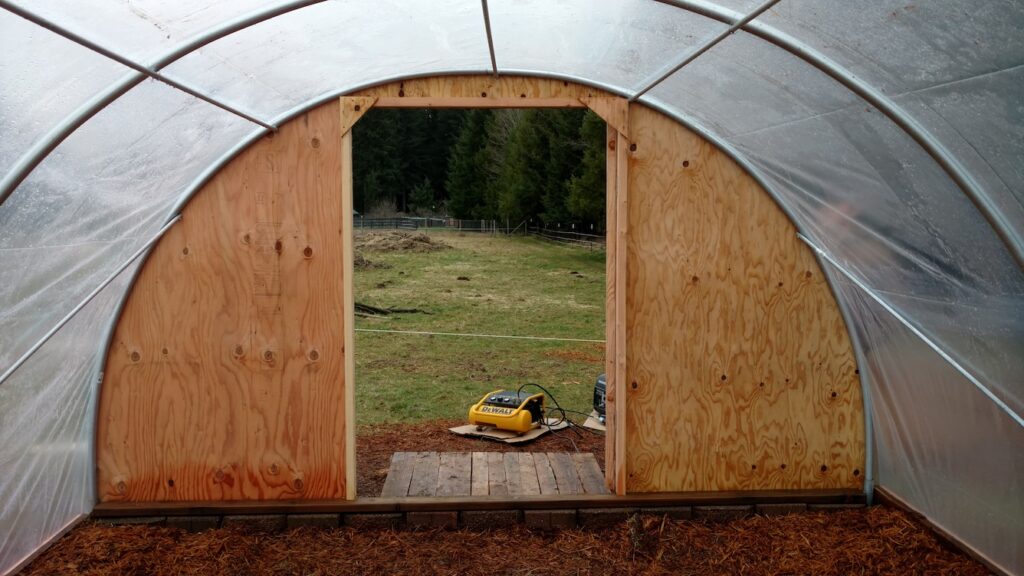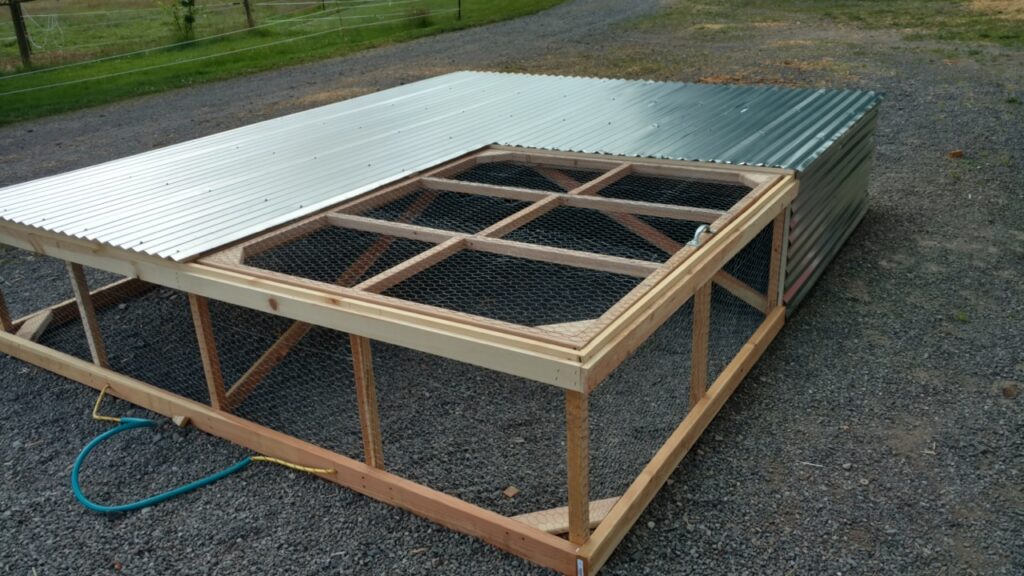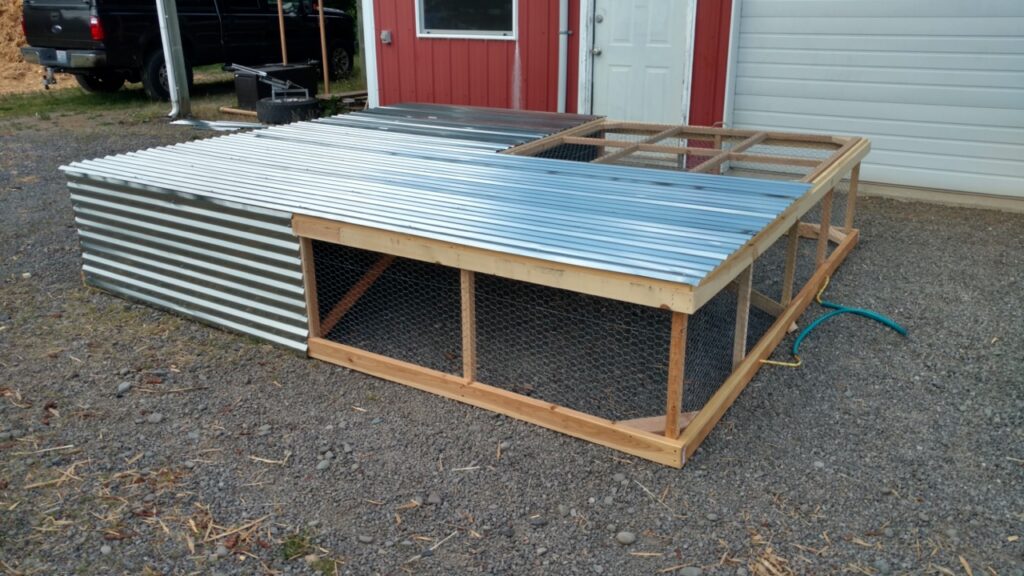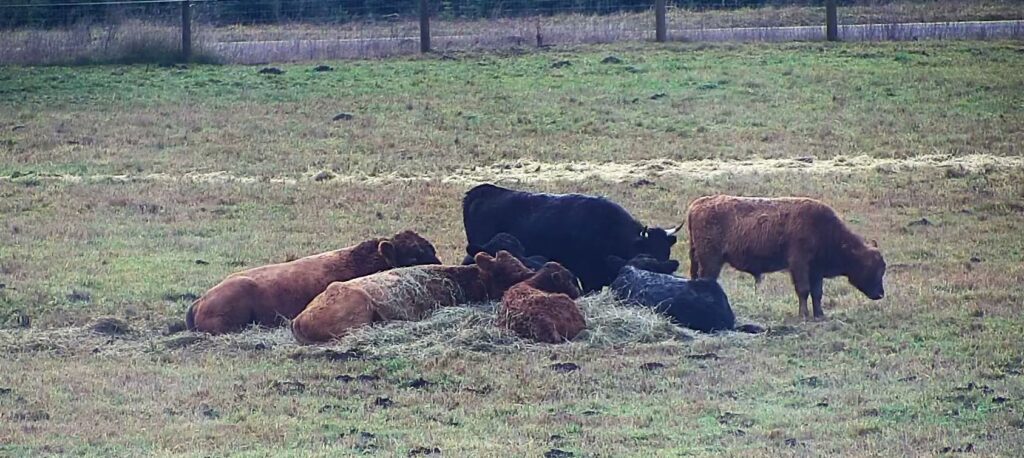American Guinea Hogs require a plan when it comes to feeding. They gain weight so easily that you shouldn’t free feed. Mature hogs only need one feeding a day, and that helps keep weight down and keep chores from taking up too much of your time. It would be nice if we could free feed them, and leave for a few days with a full feeder and an automatic watering system, but that is not a great idea with these hogs as they would eat all the feed the first day, and get upset without food on subsequent days.
Most of my mature hogs get 1/2 to 3/4 of a pound of feed each day. We have a scale and weigh out the feed so we can be fairly exact with our distribution. At least weekly, we will take a close look at each hog’s body condition, and make adjustments to their feed, based on that review. Recovering sows will get more feed, and young pigs still growing will also get more feed. Pigs under 60 pounds or so will get fed twice daily, as they are not big enough to sustain a once daily feeding over 24 hours and continue putting on weight satisfactorily.
We feed a mix that we buy from a local distributor that includes a mineral mix. We’ve gone to buying it in 1000 pound totes, as we’ve increased our hog numbers to the double digits. It saves money and allows us to stock up on a large amount at a time. It also helps to have a tractor and truck to retrieve and unload without resorting to shovels and buckets (or leaving it in the truck).
It’s also a good idea to provide hay each day for feed and bedding. Our hogs eat quite a bit of hay, unless the grass has been growing and they can graze, so we feed the same hay we feed our cows through the winter months.
We would like to be able to move our hogs regularly, but when we can’t, we will add hog fuel (pole bark) to their pen at least weekly, to provide clean ground to feed them on. We use a tractor to dump a few bucket loads of hog fuel in each pen, and not spread it out – the hogs will spread it out as they eat on the pile, and it will prevent manure from messing up the pile until it gets spread out over a the next few days. When we feed, we will dump the feed on top of the pile, spreading it out as necessary to reduce fighting and allow the hogs to get their share.
Overall, AGH are a great hog since they require so little feed, so it costs less to feed them on a daily basis. On the other hand, they require more management because they are so easily fattened and they have to be fed daily, or more often, depending on the circumstances.
